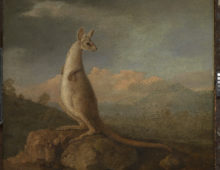What factors drove change in medical practice during the Age of Revolution? Enquiry focus 3
Surgical instruments
Suitable for students aged 14+
1. Watch
Ask students to watch the Surgical instruments video. Ask them to write down any important points about the development of surgical instruments during the Age of Revolution.
If you are watching with the students, pause the video to help them reflect on the questions below as well as considering the types of questions the historians are asking. For example, how does Mick Crumplin use his medical knowledge to explain the development of these instruments?
Can students answer the following questions?
- What were the dangers of amputation and surgery?
- How did war encourage the development of surgical instruments and practice?
- What were the most important surgical instruments used in the Age of Revolution?
2. Test
Students can try this multiple choice quiz to see how much they have remembered from the video. Students working at home can save their answers as a PDF and email them to teachers.
3. Research
War has often been a cause of rapid change in medical practice. Ask students to carry out some independent research on the development of medicine during the Napoleonic wars and produce a fact file that others can use to find out about medicine during the Napoleonic Wars. They should think about:
- the development of surgery
- the use of triage
- the links between industrialisation, war and medicine.
Students could be encouraged to look more broadly at the causes and events of the Napoleonic wars to enhance their understanding of the period. You could also ask them to think about their knowledge of surgery in different periods.
4. Connect
In the video, Mick Crumplin notes the rapid change which took place in medicine due to the experiences of the Napoleonic Wars. Ask students to look at two other objects which can be found in our Revolutionary collection:
The Earl of Uxbridge’s prosthetic leg
For each object they make notes about how it:
- shows us the developments in medicine during this period
- reveals the attitudes of people at the time.
5. Think
Can students think about other examples (from any period) where war or conflict has been the cause of change in medical technology or practice? In class this could be completed through paired or small group discussion. If students are studying at home they could be encouraged to use email or virtual chats to discuss these ideas.
6. Reflect
This enquiry focuses on influences on medical practice in the Age of Revolution and the causes of change. Students display their ideas using a Causation Diagram. They can structure the diagram in one of the ways shown here or think of their own idea. It should show how different factors (e.g. war) had an influence on changing medical inventions and practices. Remind students to include important names, dates and medical vocabulary.
Students can continually update this diagram as they learn about different medical developments during the Age of Revolution. Encourage them to explore other objects from the Revolutionary Collection which interest them, to extend their knowledge and understanding of the period.
As students develop their diagrams of different causal factors, encourage them to consider different ways of showing links, highlighting key names and dates, and developing ideas for revision.
7. Extend
Students can read these blog posts on other aspects of surgery and add any relevant information to their causation diagram:
John Hunter, father of scientific surgery
An amputation at the hip joint
In a classroom setting these blogs could be set as homework reading or as inspiration for students writing their own blog on medical developments in different periods.
Try the other enquiries in the series
What factors drove change in medical practice during the Age of Revolution?
Enquiry focus 1 – The kymograph
Enquiry focus 2 – Anatomical research and Charles Bell
Enquiry focus 3 – Surgical instruments
Enquiry focus 4 – Early anaesthetics
Consolidate your thinking – Drivers for change in medical practice during the Age of Revolution
Was change in medical practice revolutionary or evolutionary during the Age of Revolution?
Enquiry focus 1 – Vaccination
Enquiry focus 2 – The Old Operating Theatre
Enquiry focus 3 – Phrenology
Enquiry focus 4 – The stethoscope
Consolidate your thinking – Change in medical practice during the Age of Revolution


